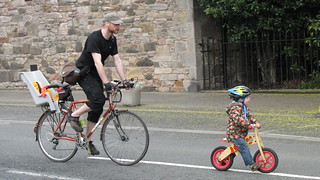My understanding of most bus lanes in Edinburgh is that, when active, only buses, taxis and bicycles are allowed in them. I don't understand why taxis should have this benefit.
The major problem we have, as I see it, is not the number of cars we have, but is instead the miles that are driven, because that consumes fuel. Taxis save people having to buy cars, but the number of cars we have is not the major problem; it is the amount of fuel being consumed that is the major problem - to our environment. Taxis use just as much fuel as cars (probably more on average), and are in constant use. They are not saving fuel like buses, bicycles, etc. So why allow them to benefit from using bus lanes? If anything, they should be one of the last vehicles allowed to use them.
Or are there reasons I'm not considering why they should have this perk given to them?

 posts
posts
